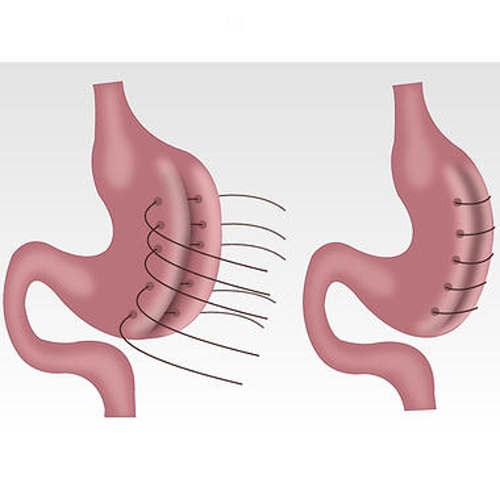GASTRIC SLEEVE
Gastric sleeve surgery, or vertical sleeve gastrectomy, is new bariatric surgery performed laparoscopically. This procedure is designed to give obese patients a life-time assistance in losing weight and/or maintaining weight.
This permanent bariatric surgery works by reducing the size of the stomach as much as 80%. This reduction of the stomach capacity forces the patient to consume smaller portions throughout the day, helping aid weight loss.
The stomach is reduced by cutting the stomach “vertically,” then stapling the stomach closed. The advantage of cutting the stomach allows the hormone that produces appetite to be reduced, inducing further weight loss.
After the surgery patients can expect 50% of their excess weight in 6 months, and roughly 56% in 12 months. Some can lose up to 60% of their excess weight in 6 months. Patients can lose weight for 2 or 3 years after surgery.
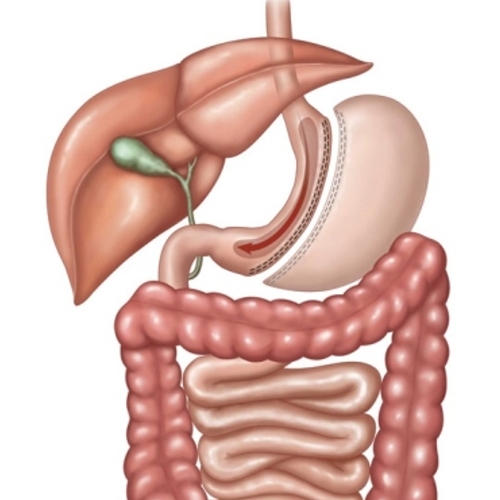
REVISIONAL SURGERY
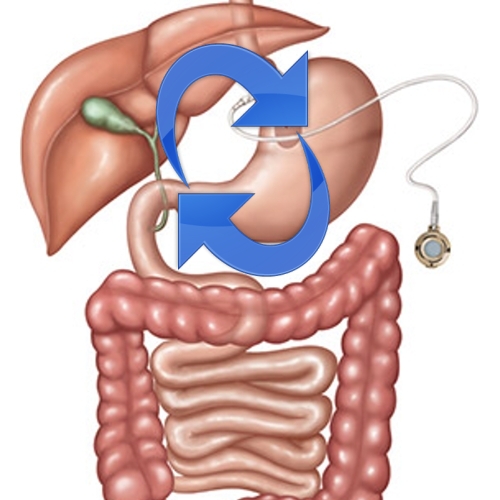
Revision surgery is a second gastrointestinal surgery with specific aims to correct or to change a previous bariatric surgery. For example, if a previous gastric bypass surgery fails to produce adequate weight loss, or if there are unpleasant complications, a revision can be performed to give the patient desirable results.
Dr. Alejandro Lopez is an experienced weight loss surgeon who is capable of revising a previous weight loss surgery, even a surgery performed by another bariatric physician.
Most bariatric surgeons in Canada and the United States won’t touch revision surgeries because of the inherent risk and the considerable experience required. In Mexico however, most surgeons have been practicing weight loss surgeries years before their U.S. and Canadian, allowing them to mend other bariatric surgeons work.
GASTRIC BYPASS
Gastric bypass surgery, otherwise known as roux-en-y (RNY) gastric bypass surgery, is one of the premier bariatric surgeries being practiced today. Gastric bypass provides high expected weight loss, and is highly studied – which is why gastric bypass is known as the “gold standard of bariatrics.”
Gastric bypass surgery uses two approaches for weight loss: restrictive and malabsorptive. By creating a small pouch, which will serve as the new stomach, patients will be forced to consume smaller amounts of food. This restrictive method will induce patients to eat several meals per day with small foods.
The malabsorptive method of gastric bypass is when the intestines are bypassed by cutting the intestines and reattaching it to the new pouch. This bypass means that a significant portion of nutrients not be absorbed – which will decrease caloric intake.
These two primary methods, allow gastric bypass patients to safely reduce the hunger hormone and to decrease caloric intake.
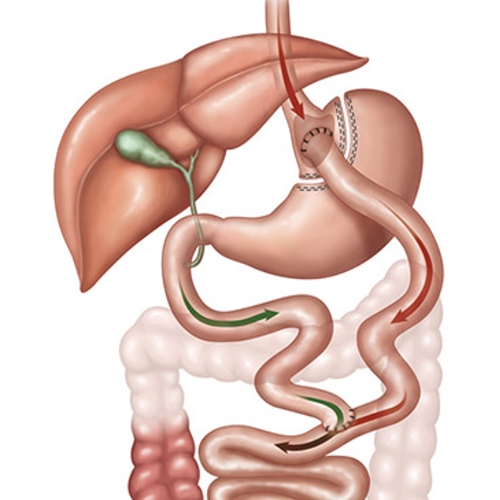
MINI GASTRIC BYPASS
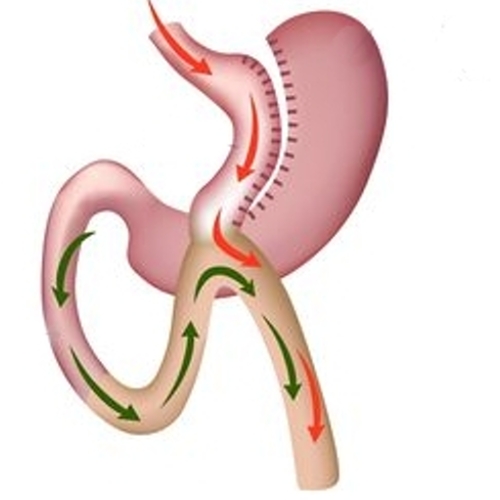
This weight loss procedure requires that your stomach be divided into two pouches, an upper pouch and lower pouch. The lower portion of your small intestine is fused to the smaller upper pouch. The creation of a smaller stomach pouch, which holds less than a cup of food, will help you get fuller quicker and feel fuller longer, and you will ultimately lose weight faster. By surgically resecting the small, upper pouch to the lower portion of your bowels, food will not be completely broken down, absorbed, or processed within your system prior to exiting your body.
The revolutionary procedure is performed laparoscopically with minimal invasive incisions.
DUODENAL SWITCH
Duodenal Switch is a very complicated weight loss surgery aimed to provide very high expected weight loss and even cure comorbidities.
Duodenal switch works two ways. The first is a creation of a new stomach pouch that is significantly smaller. This will help patients feel fuller faster, and is very similar to vertical sleeve gastrectomy. The second aspect is the malabsorptive effect, it involves digestive changes so that food can be passes through the shortened intestines undigested. This is just as powerful and as complex as roux-en-y gastric bypass.
In duodenal switch, the stomach is permanently reduced up to 85% in a “vertical sleeve” shape. This allows the patient to feel fuller faster which forces the patient to consume less food.
The expected weight-loss of the duodenal switch can be higher than roux-en-y gastric bypass. Patients can expect to lose 70% of their excess weight, having most of the weight fall off in 12 to 18 months.
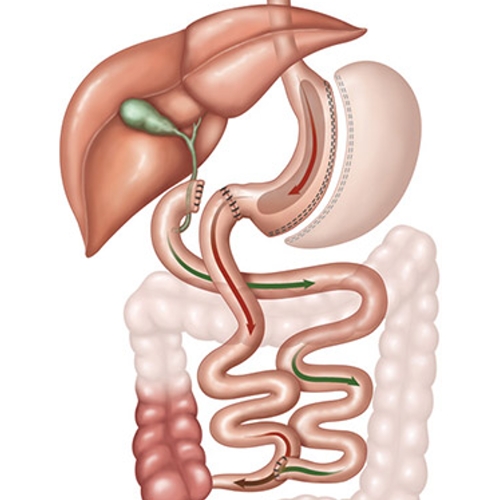
GASTRIC BANDING
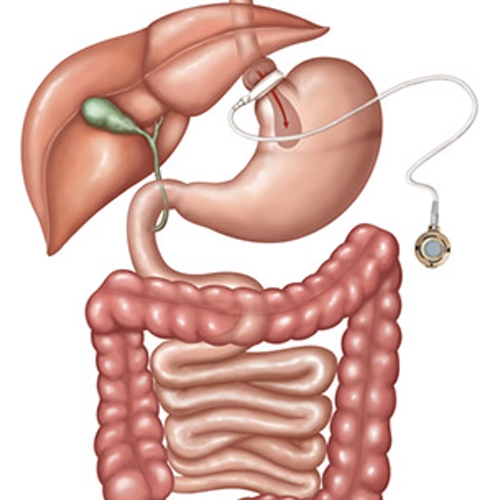
Gastric banding surgery, often known under the medical brand names Lap-Band, works by using restrictive techniques to induce weight loss. Gastric banding surgery works by using a medical implant (the band), that wraps around upper portion of the stomach to reduce stomach capacity.
The reduction of the stomach’s capacity, forces patients will consume less food because they will feel fuller faster. The reduced capacity will also force patients to consume small amounts of food several times a day. This will limit daily caloric intake, thus inducing weight loss.
Unlike other bariatric surgeries, gastric banding surgery is a reversible surgery. Gastric banding requires patients to occasionally adjust their gastric band to further the weight loss. Unlike other surgeries it requires a strict modification in a patient’s dietary habits. Patients will be required to change what they eat, how they eat and when they eat.
Overall, gastric banding surgery is a straightforward bariatric surgery that provides high expected weight loss, with limited risks.
GASTRIC PLICATION
Gastric Plication, is a new weight loss surgery that is very similar to gastric sleeve surgery. Both use the restrictive technique to facilitate weight loss surgery.
This technique uses non-dissolvable sutures to fold the stomach into itself therefore it reduces the stomach’s capacity. By forcing the stomach into itself, patients will feel fuller faster.
This technique is different from gastric sleeve surgery, in two ways. First, gastric sleeve surgery restricts the hunger hormone ghrelin. This reduction causes patients to eat less. This is one of the reasons why gastric plication typically produces less expected weight loss.
Second, gastric sleeve surgery is a non-reversible surgery, whereas gastric plication gives patients the option to undo the surgery.
